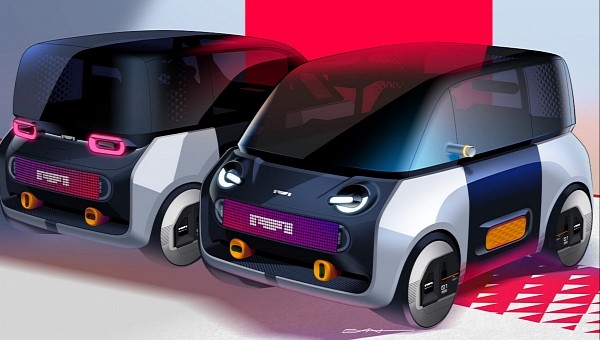Foxconn is on a quest to show it can manufacture electric cars for anyone willing to sell them. It already presented several electric vehicles based on the MIH Open Platform, such as the Model E (an E-segment sedan), Model T (a bus), Model V (a truck), Model B (a B-segment hatchback), and Model C – which will reach the market as the C-segment SUV Luxgen n7. But what about affordable vehicles? The answer is the Project X.
The MIH Consortium introduced the idea on MIH Demo Day, an event to present all possibilities delivered by the MIH Open Platform. Foxconn developed it with the help of its consortium, which involves more than 2,500 members. The idea was to show the open-source platform could also underpin an A-segment vehicle. Anyway, this must be quite a challenge, considering the first prototype will only be presented by the end of 2023.
If the MIH Consortium call pulls that off, it will give several new companies planning to sell an electric car the opportunity to do so. Hon Hai calls this concept Build Your Own Vehicle, or BYOV, for short. It is based on a “modular design approach and standardized interfaces” that would allow products to be “introduced in less time and cost.” In fact, it is simpler than that.
If enough people use the MIH Open Platform, the MIH Consortium will pay off the investment in developing it much faster. With a ready architecture, anyone willing to sell a car can hire Foxconn to develop it over the existing platform for a fraction of regular costs. Creating a vehicle from scratch usually costs more than $1 billion.
As attractive as that sounds, electric cars make it a bit more complex to sell an affordable vehicle. After all, the battery packs they need still cost a fortune, and the increasing number of carmakers selling them only makes it worse: more people are willing to pay higher prices to ensure they have battery packs. When the raw materials are scarce, that drives costs up.
Our bet for Project X is that it will be extremely light, which will help it adopt a smaller battery pack for a decent range. That will be hard to achieve with LFP cells, the cheapest lithium-ion cells currently available. We’ll learn how the MIH Consortium solved that about one year from now.
If the MIH Consortium call pulls that off, it will give several new companies planning to sell an electric car the opportunity to do so. Hon Hai calls this concept Build Your Own Vehicle, or BYOV, for short. It is based on a “modular design approach and standardized interfaces” that would allow products to be “introduced in less time and cost.” In fact, it is simpler than that.
If enough people use the MIH Open Platform, the MIH Consortium will pay off the investment in developing it much faster. With a ready architecture, anyone willing to sell a car can hire Foxconn to develop it over the existing platform for a fraction of regular costs. Creating a vehicle from scratch usually costs more than $1 billion.
As attractive as that sounds, electric cars make it a bit more complex to sell an affordable vehicle. After all, the battery packs they need still cost a fortune, and the increasing number of carmakers selling them only makes it worse: more people are willing to pay higher prices to ensure they have battery packs. When the raw materials are scarce, that drives costs up.
Our bet for Project X is that it will be extremely light, which will help it adopt a smaller battery pack for a decent range. That will be hard to achieve with LFP cells, the cheapest lithium-ion cells currently available. We’ll learn how the MIH Consortium solved that about one year from now.








